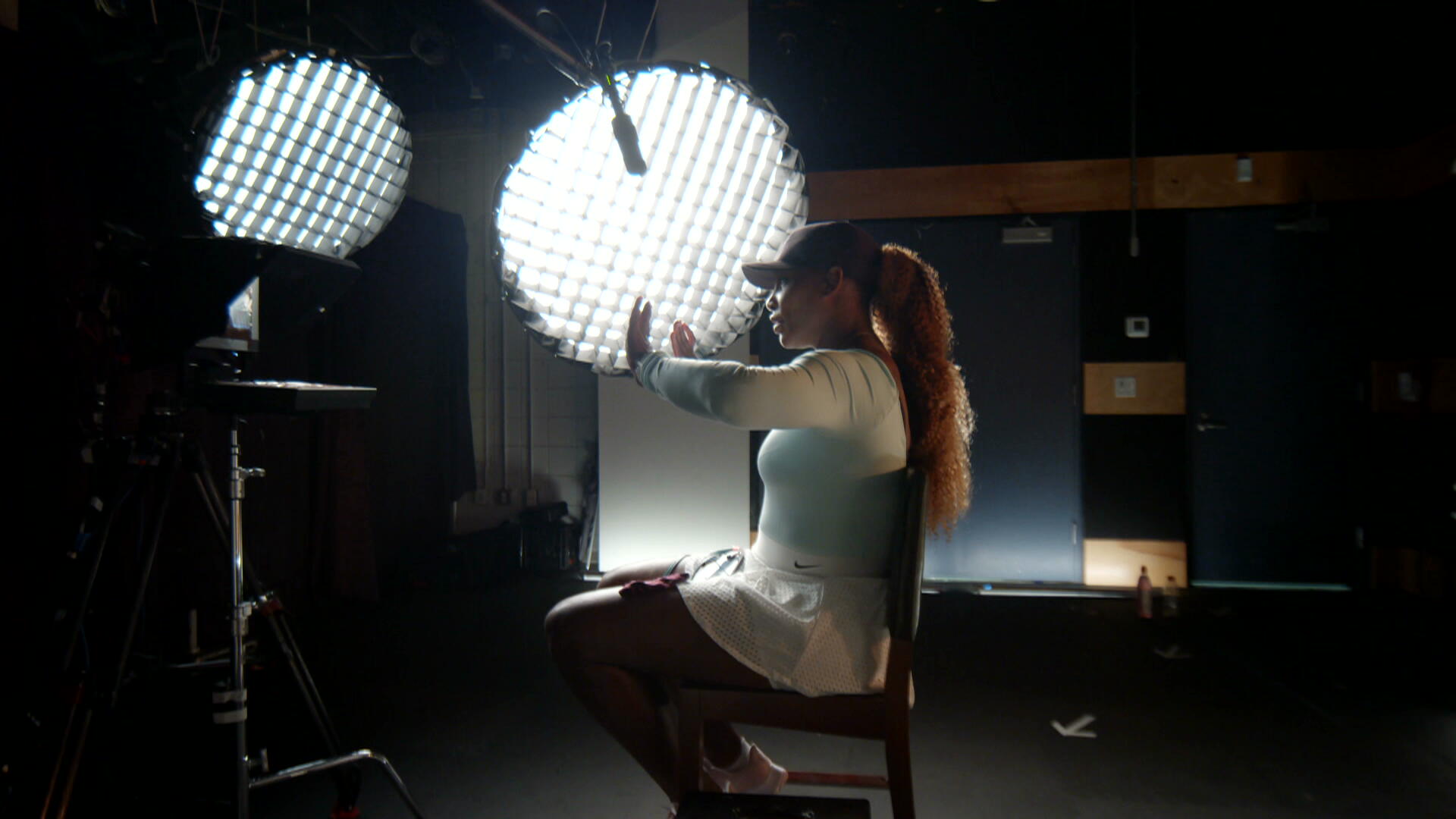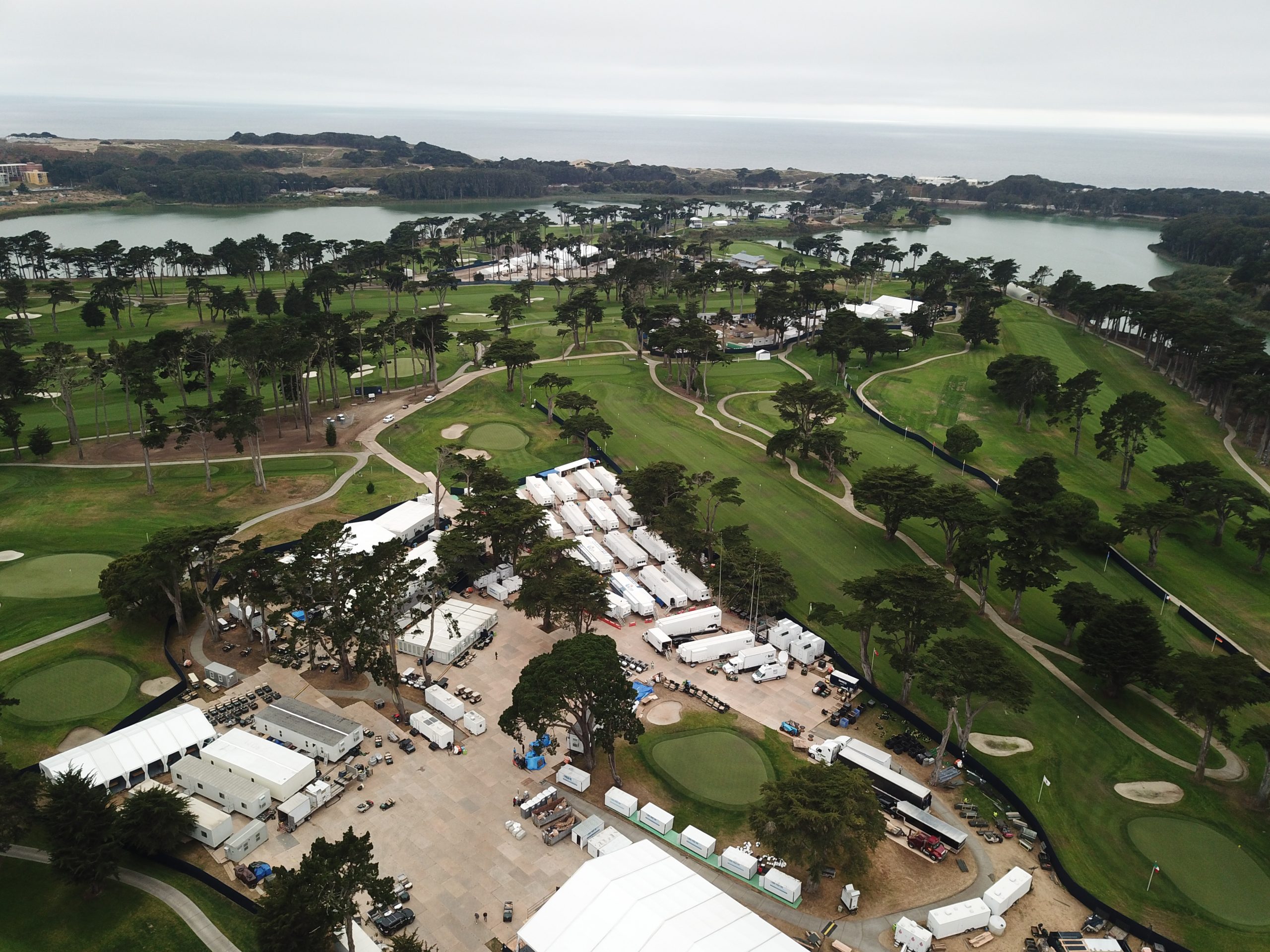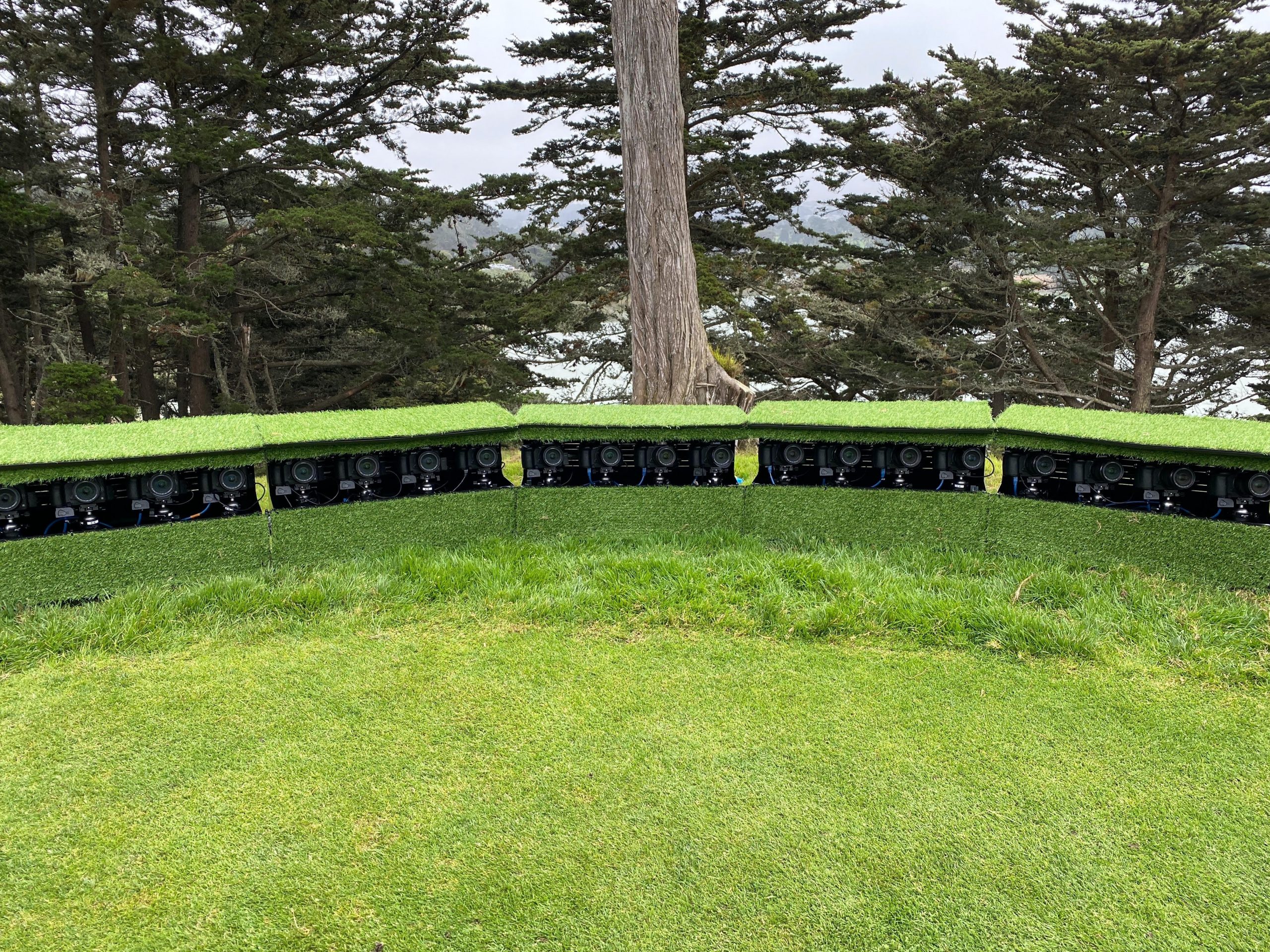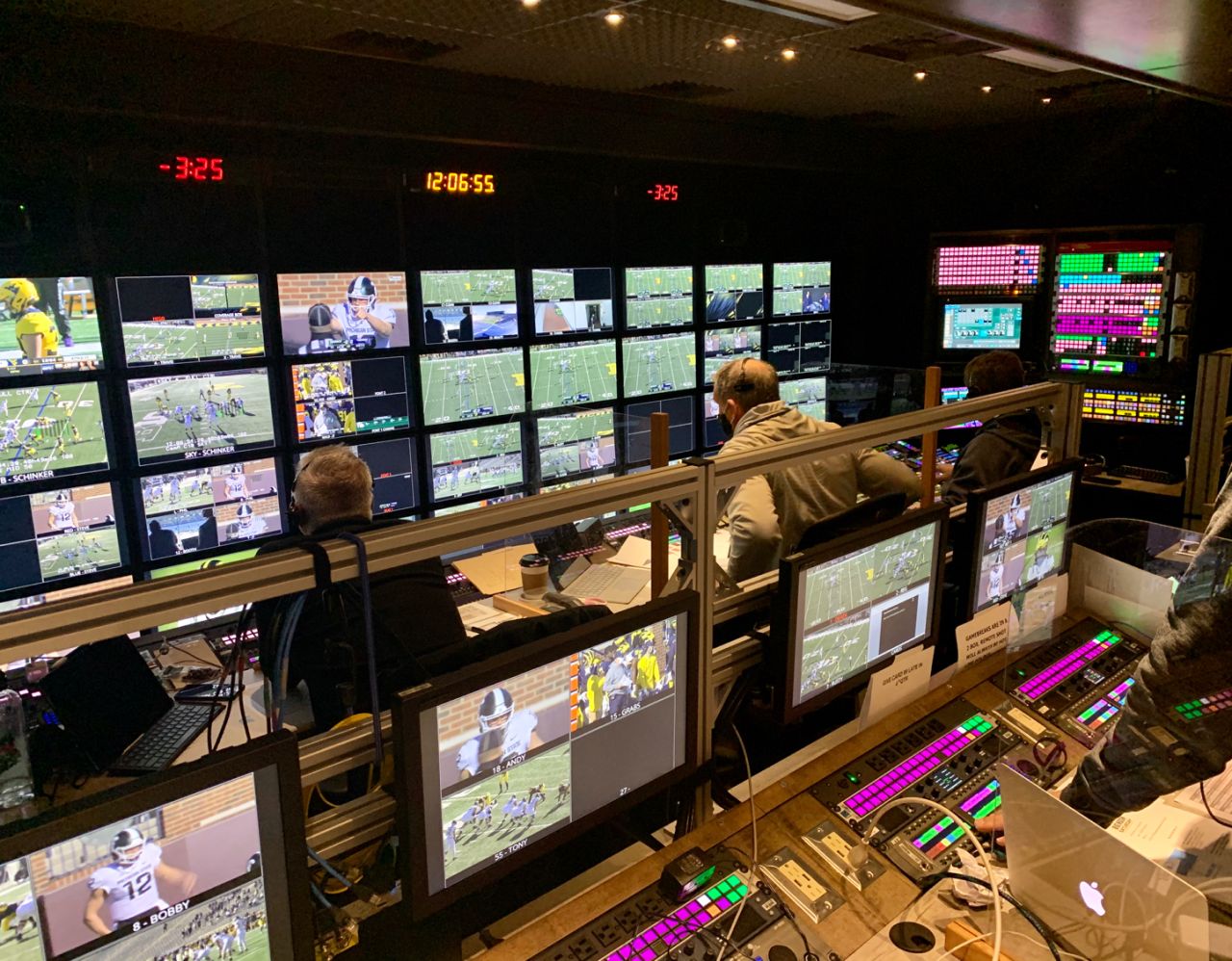2020 in Review, Part 3: How US Open Tennis, Golf Majors, College Football and NFL Productions Returned in the Age of Coronavirus
Story Highlights
When the pandemic caused the U.S. sports world to suddenly grind to a halt in mid-March, broadcasters and live-event producers were faced with one of the greatest challenges in the industry’s history: How to bring back live sports broadcasts safely.
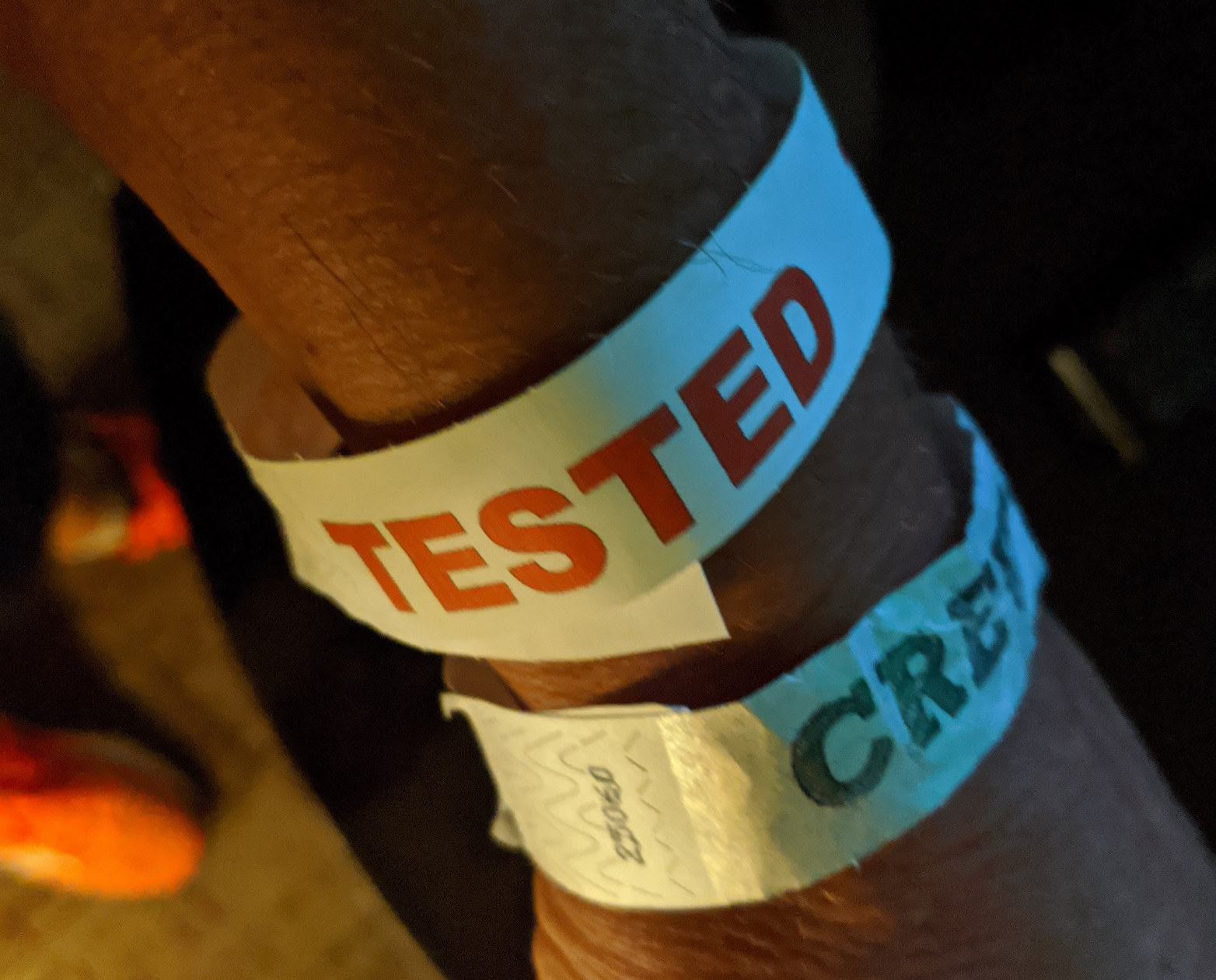 In the ensuing months, sports broadcasters, technology vendors, and production-service providers worked together to develop unique new workflows – both on-site and remote – that would pave the way for live-sports broadcasts to resume. Despite a litany of unknowns and a 2020 sports calendar thrown into chaos, all four major U.S. sports leagues returned along with the bulk of the major American sports events – providing a much needed respite for content-hungry sports fans struggling during the pandemic.
In the ensuing months, sports broadcasters, technology vendors, and production-service providers worked together to develop unique new workflows – both on-site and remote – that would pave the way for live-sports broadcasts to resume. Despite a litany of unknowns and a 2020 sports calendar thrown into chaos, all four major U.S. sports leagues returned along with the bulk of the major American sports events – providing a much needed respite for content-hungry sports fans struggling during the pandemic.
Here is the final chapter in SVG’s three-part series “The Comeback: How Live Sports Production Returned in the Age of Coronavirus”, which provides an in-depth look at the industry’s monumental efforts to bring back live sports production in the face of coronavirus in 2020. The Comeback was originally published in the 2021 SVG Sports Production Yearbook, which you can read in full HERE. And make sure to check out the hyperlinks throughout this story for more in-depth articles on these groundbreaking productions.
USTA, ESPN Serve Up Covid- Safe US Open in Queens
This year’s US Open effort was the result of months of planning, contingency planning, and taking some risks with new technologies by the USTA. The USTA held weekly calls with key organizations, including Hawk-Eye, SMT, ATP Media, WTA Media, NEP, and ESPN leading up to the tournament. The goal was to pull off the first tennis major to be played in the age of COVID-19 and to hold it in New York City, arguably ground zero of the pandemic here in the U.S. No fans, no international rightsholders onsite, no media were part of the solution. Plenty of strict protocols to make sure everything was as safe as possible was the other part.
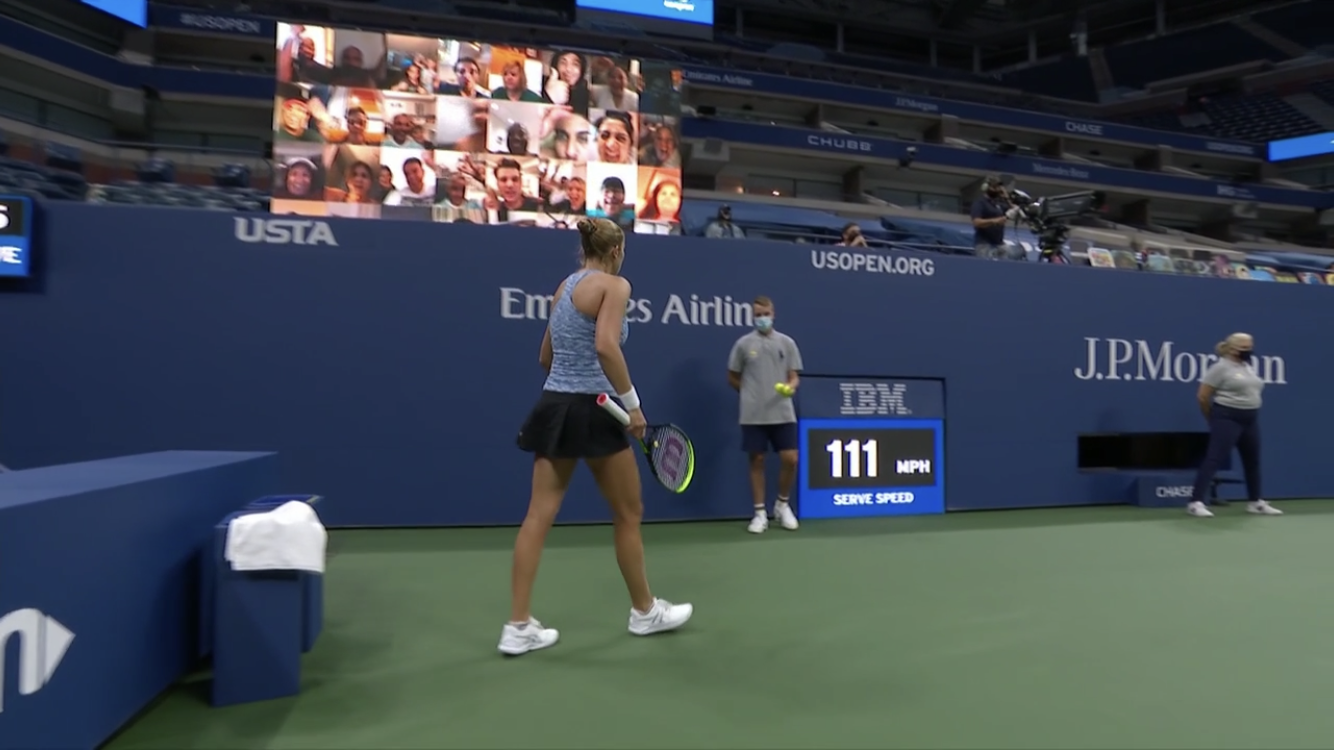
Videoboards positioned around the US Open Arthur Ashe Stadium court featured fans from around the world supporting their favorite players with cheers submitted through an app.
For its part, host-broadcaster ESPN was tasked with producing the US Open — its largest event of the year — under unprecedented circumstances. Even in a good year, the production takes months of planning at a scale that can impress anyone in the industry. Add in COVID-19, and the accomplishment the team pulled off was even more impressive.
ESPN worked closely with the USTA team to draw out the spacing needs to the inch so that every operator could work in a socially distanced way. International rightsholders were not at the Billie Jean King Tennis Center, and many personnel who would usually be onsite were working remotely. Those two factors allowed the ESPN and USTA teams to work more safely.
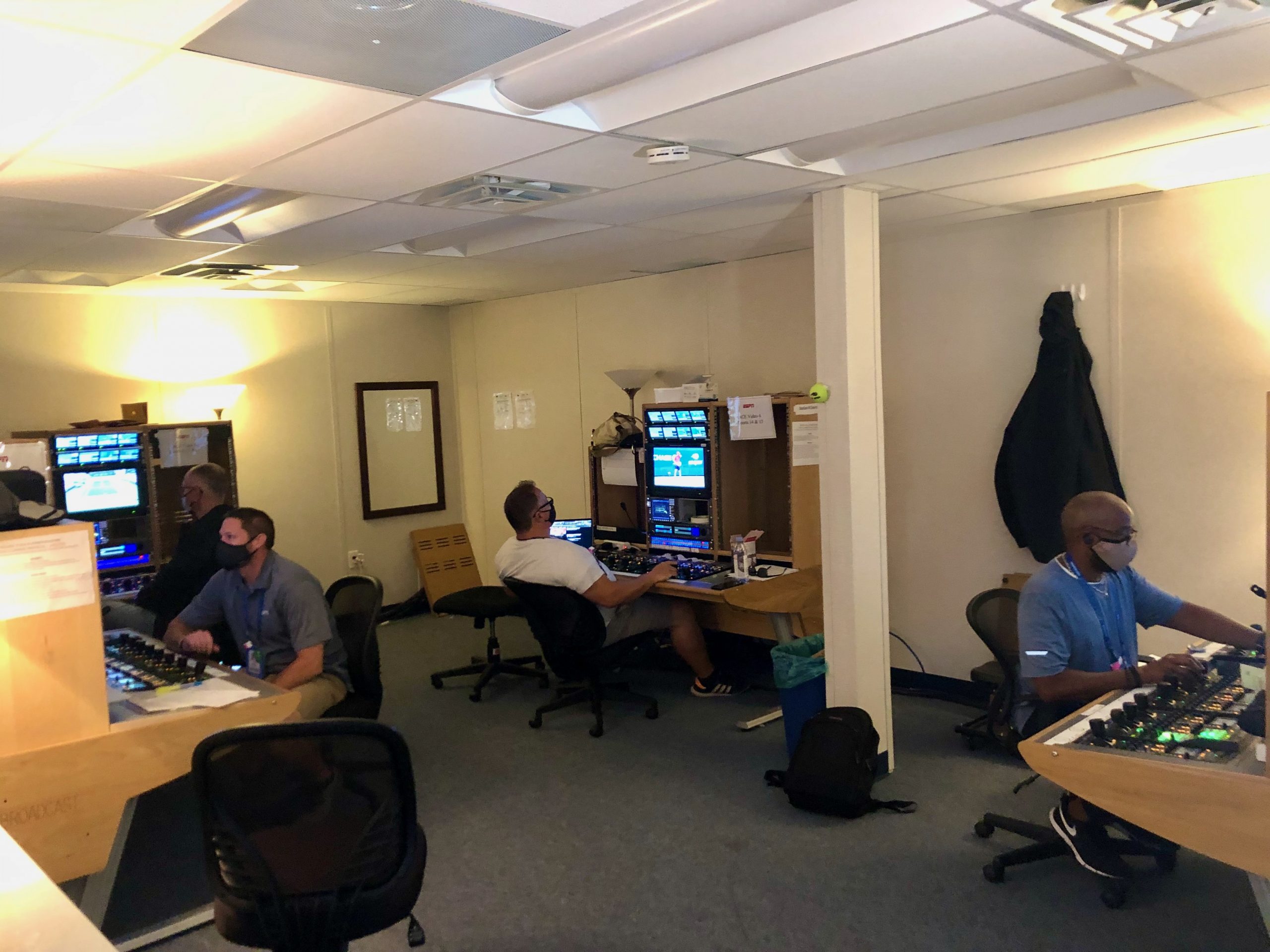
The US Open Broadcast Building provided ESPN’s production team with ample space for social distancing.
The biggest production change was that there were only three TV courts: Arthur Ashe, Armstrong Stadium, and Court 17. All the others were produced using the Simply Live ViBox because of the requirement to limit the production team to as few people as possible. In addition, ESPN expanded its ACES automated-production operation with 10 courts being produced using Simply Live ViBox system and robotic cameras controlled by the Fletcher Trace player-tracking system.
In addition, the incredible effort of the USTA digital team served up supplemental content on the US Open App and USOpen.org for avid and casual tennis fans alike.
Big-Time Productions Return With CBS and NBC’s Golf Major Coverage
For golf broadcasters, this year was a year unlike any other: the Majors schedule was shuffled, events were canceled, and fans were rarely permitted at professional golf events.
And that is why the production plan CBS Sports put together for the PGA Championship in August at TPC Harding Park in San Francisco was so important: it signaled the return to producing a sports event in a big way. CBS Sports’ production marked the largest remote presence for a live sports event since the whole pandemic began with 22 mobile units, a two- story tech structure, and a multitude of office trailers.
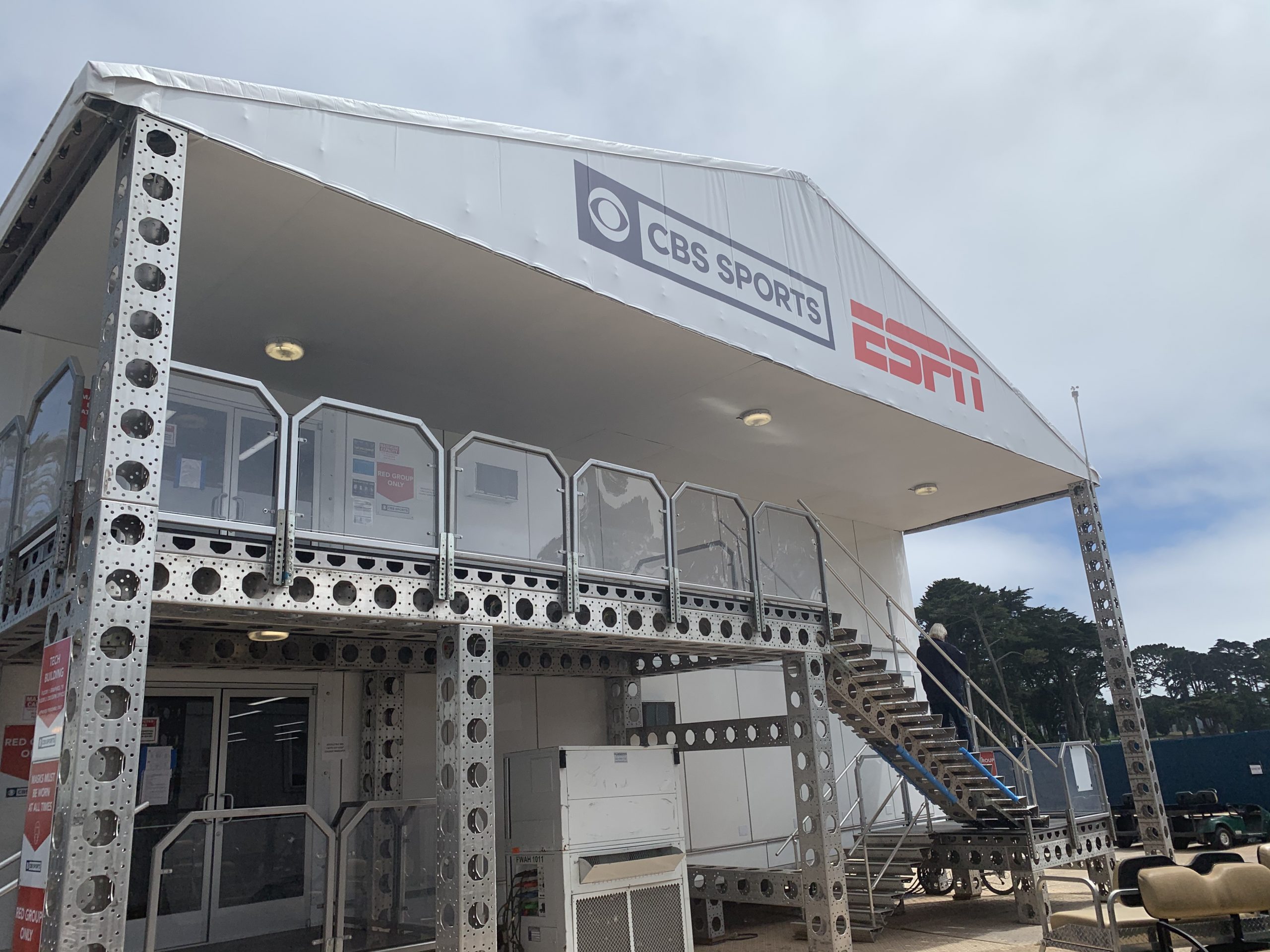
A two-story tech building is on site at TPC Harding to handle production demands for the PGA Championship.
While the production included fewer people onsite than in the past, the production quality and dedication from the crew remained the same. NEP Supershooter CBS handled back-nine coverage; Game Creek Video’s Encore, the front nine, while NEP ND7 handled a variety of tasks for CBS and ESPN.
Just over a month later, the second major of the year teed off with the U.S. Open. Producing a golf major typically takes one (if not two) full years of planning. So, when NBC Sports took over the 2020 U.S. Open from Fox Sports just two months before it was set to tee off at Winged Foot, it kicked off an accelerated planning process that would challenge any production team. The result of all the effort was an NBC production that had upwards of 74 cameras, an aerial shot, a massive compound featuring NEP and BSI production units, and three on-course studios.

More than 190 countries broadcast the U.S. Open via a world feed produced by the USGA out of NEP’s NCP14 production unit.
NEP’s ND4/Double Eagle A, B, and C was at the core of the production. Also in the compound were XL1, Fiber 1 and 2, Supershooter 17, Supershooter 29, ST1, ND6, and ST21, ND6, Supershooter 28. More than 190 countries broadcasted the U.S. Open via a world feed produced by the USGA out of NEP’s NCP14 production unit. In addition, NBC was out in full force onsite for the U.S. Open, following in the footsteps of CBS’s massive footprint for the PGA Championship a month earlier.
CBS Sports returned to the tee box in November for the re-scheduled version of The Masters from Augusta National, deploying its typically massive and detail-oriented production. Augusta National Golf Club approached the CBS Sports production team about improving the production look and feel without fans on the course, challenging the network to introduce production elements with new dramatic visuals that would bring back some of the missing emotion. The CBS Sports broadcast proved to be a Masters “unlike any other” with a host of new production tools, including drones and a Flycam system.
Golden hour at Amen Corner. #themasters pic.twitter.com/BiTDRSWMcD
— The Masters (@TheMasters) November 12, 2020
After Tumultuous Offseason, College Football Returns to the Gridiron
Following an offseason riddled with uncertainty and debate, when it appeared that the college football season may very well not happen, all the top-tier college football conferences were able to kick off their seasons this fall. And, thanks to the diligent work of ESPN, Fox, CBS, NBC, and other broadcasters, fans were able to see the return of all 10 FBS conferences through hundreds of COVID-safe live productions at venues across the country.
ESPN has deployed a variety of onsite and REMI production models to broadcast upwards of 300 games over three months. ESPN operations pulled every flavor of live production workflow out of its pockets, ranging from the COVID-altered onsite full truck productions with crew and on-air talent onsite to varied levels of REMI productions. The network even utilized the on-campus control rooms at ACC and SEC schools, which were originally designed to support school-produced live broadcasts for the ACC Network and SEC Network, at various points during the season.
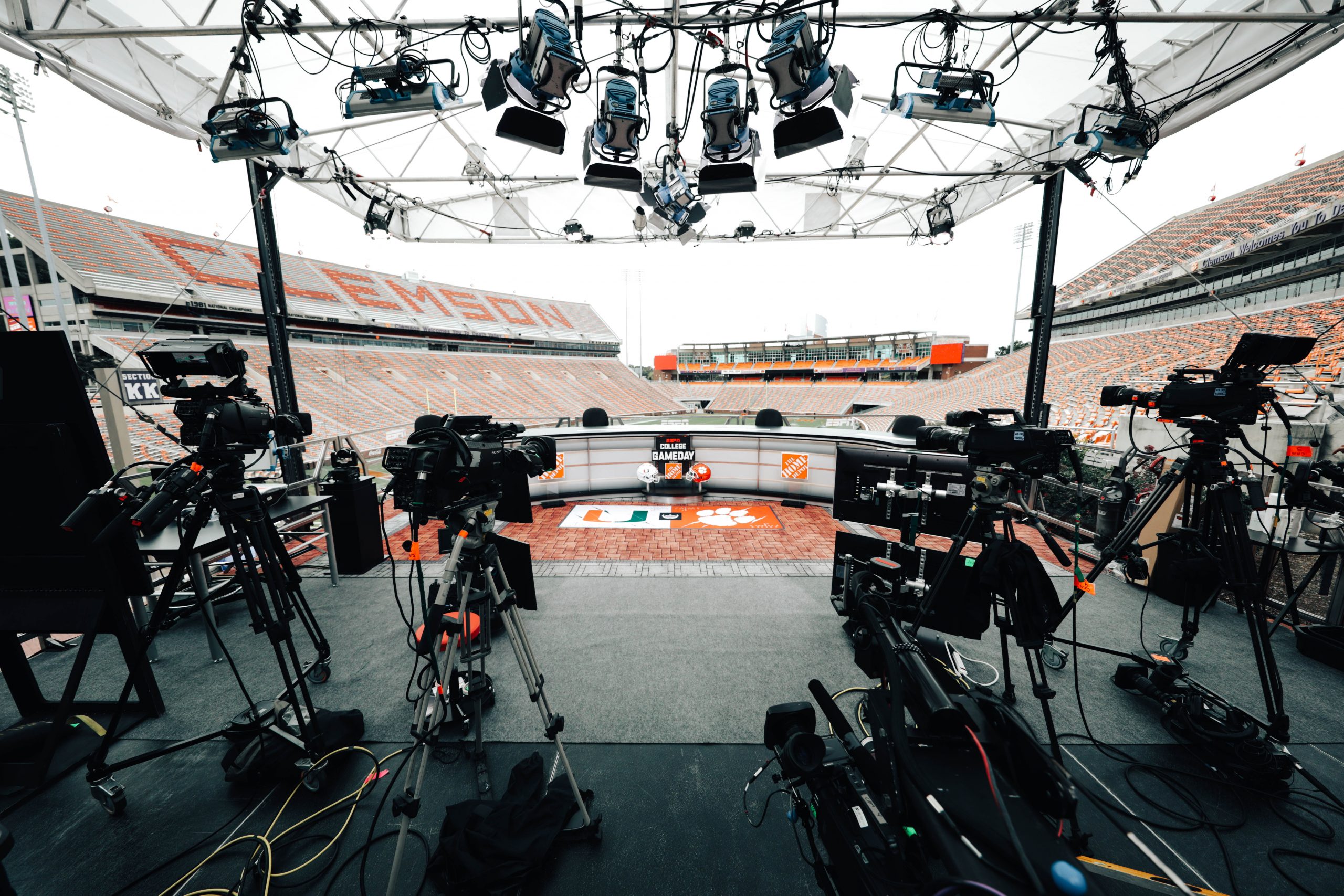
Despite the pandemic, ESPN College GameDay is still visiting campuses this year, including Clemson for its matchup with Miami in October.
Fox Sports also embraced remote production, creating a world they are calling “The Vault” that can be connected to any of its trucks on college football or NFL. Fox has multiple positions for EVS operators, Fox Box scorebug operators, and Vizrt operators. Despite relocating about 25 positions across all of its shows back home,“nobody could tell if something was coming from the truck or The Vault,” according to top Fox Sports production exec Brad Zager.
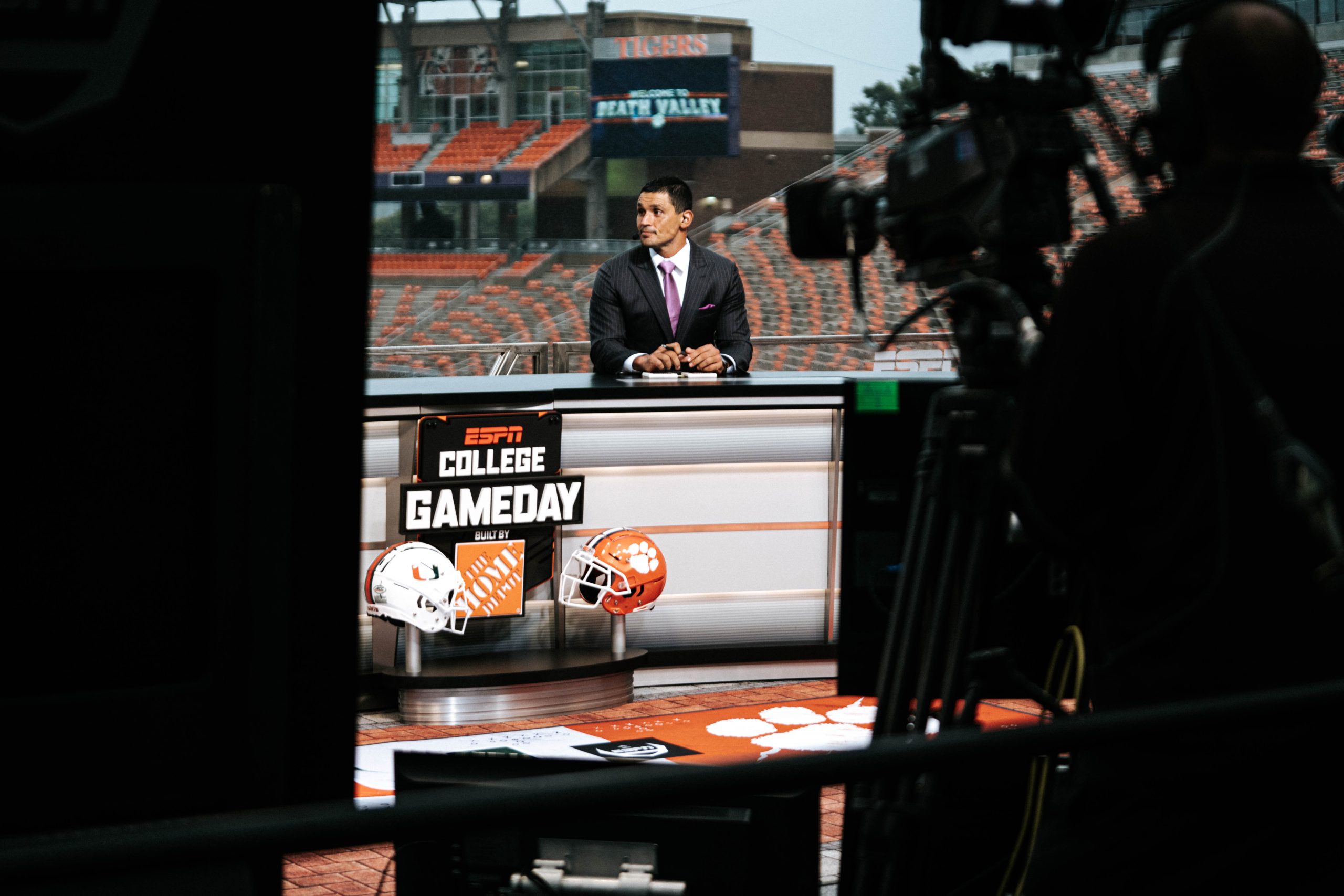
ESPN is utilizing a hybrid remote/ onsite production model for GameDay this year and a “Virtual Pit” for fans.
The SEC returned to the field in late September and the CBS production, operations, and technical teams had to overcome numerous challenges to prepare for SEC on CBS productions. The number-one priority was the health and safety of the crew. To that end, CBS Sports has had some production and technical personnel working offsite. For SEC on CBS, that will mean multiple positions typically located in the truck have been re-located offsite to Freedom Studios in Clifton, NJ, which is tied into the F&F Productions GTX19 production truck that will be onsite at the games.
NBC once again threw its efforts into bringing the storied Notre Dame football program into living rooms of the school’s countless fans across the world. These efforts crescendoed in November with with the Fighting Irish’s dramatic upset of then No. 1 Clem- son, which was “far and away the biggest production we’ve ever done in the history of our Notre Dame coverage,” according to director Pierre Moossa.
NFL Kicks Off on Time as Broadcasters Look to Innovate
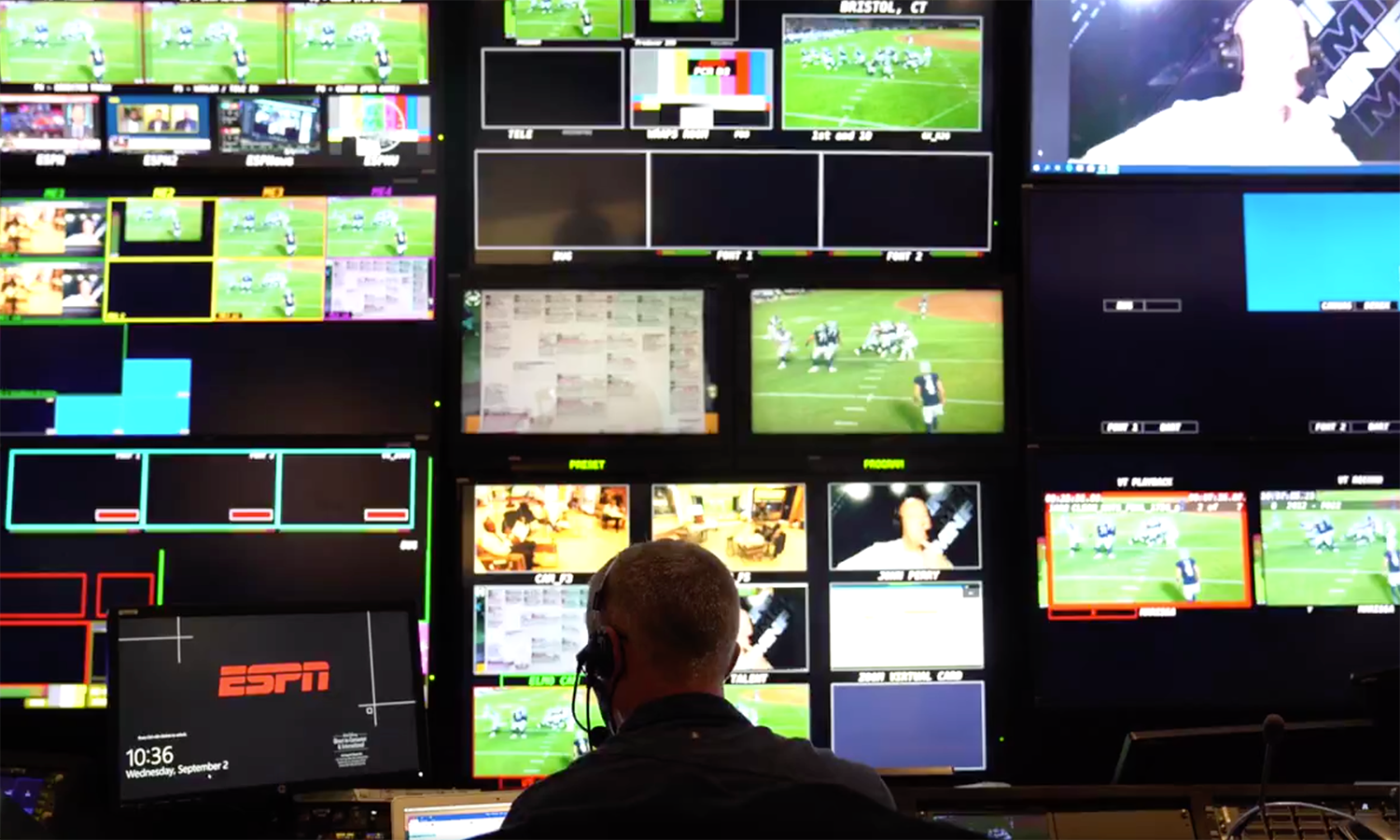
ESPN director Jimmy Platt calls the action for Monday Night Football. The MNF crew hosted this dress rehearsal on the ESPN main campus in Bristol, CT.
While the rest of the 2020 sports calendar was thrown into disarray by the pandemic, the NFL season kicked off as planned on Sept. 10. And though the league may have begun play on time, the offseason was anything but normal for NFL rightsholders CBS, ESPN Fox, NBC, and NFL Media.
The NFL on CBS is in the midst of another year as broadcaster of the Super Bowl with big plans for the big game in 2021. For the regular season, the Tiffany Network decided against virtual fans in favor of flying Skycam unrestricted above and near empty seats in the stadium. The decision to go without virtual fans ultimately allowed CBS Sports to release the constraints on Skycam.
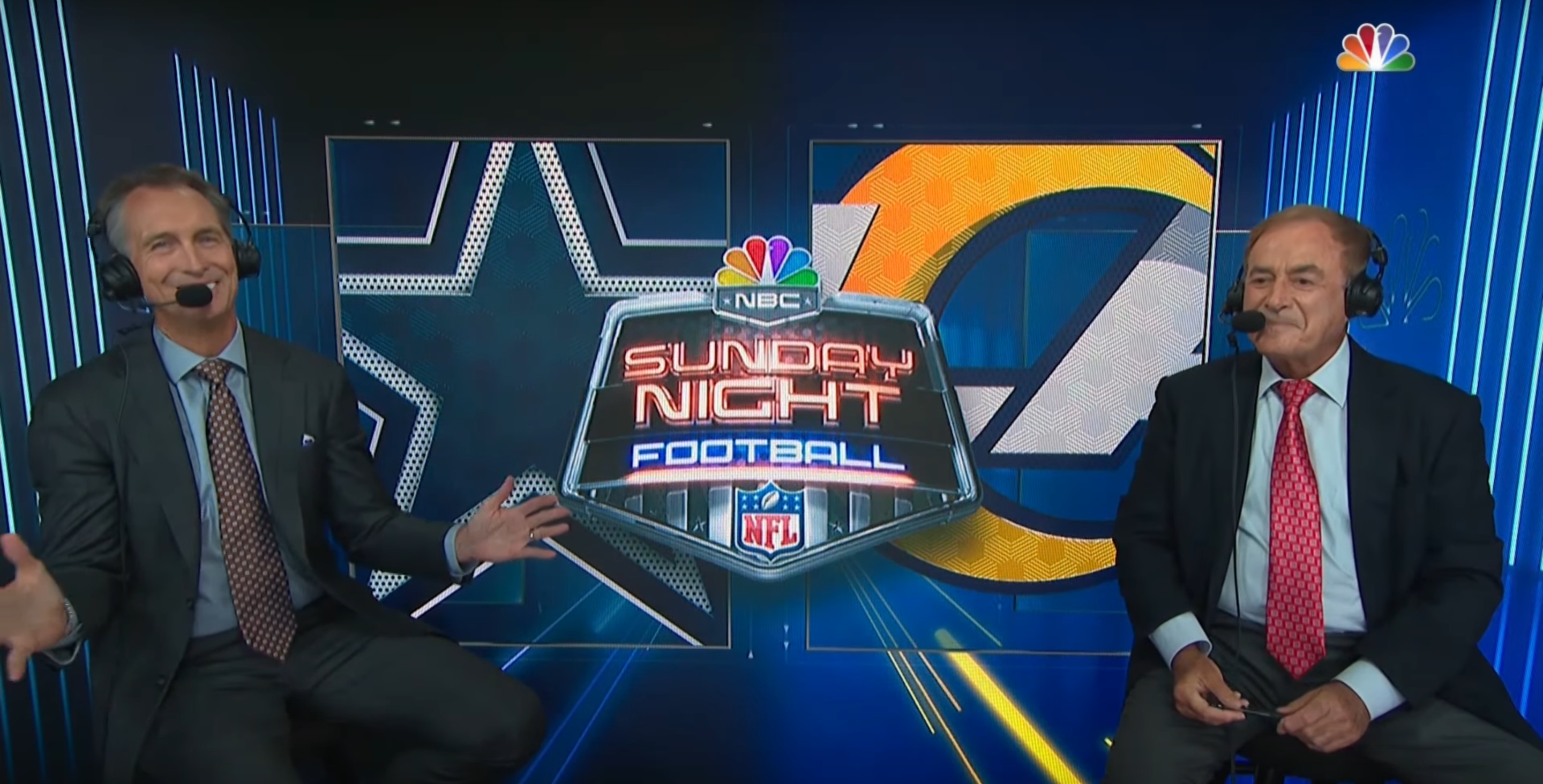
Al Michaels (left) and Chris Collinsworth are socially distanced inside the NBC SNF booth. The SNF booth also features additional LED backdrop and new Panasonic robo to account for the modified footprint this year.
Always looking to innovate, Fox Sports became the lone NFL broadcaster to integrate virtual fans into its NFL telecasts. The virtual fans element joined an army of cameras — including high-speed systems, Skycam, PylonCams and — and virtual graphics in Fox Sports’ NFL arsenal. In addition, the broadcasters instituted a host of new safety protocols, to keep production crews safe in creating TV across the country.
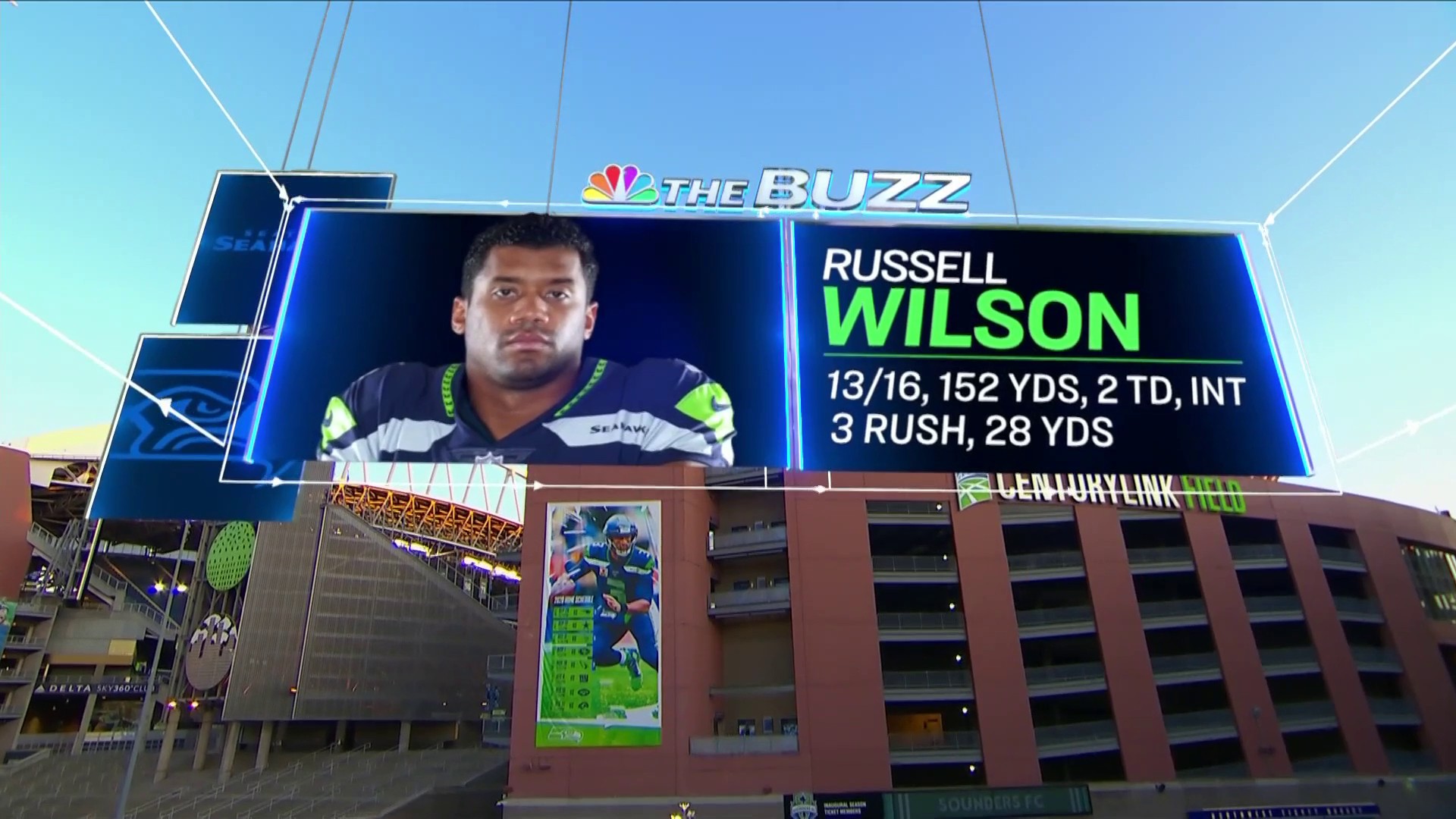
NBC added a camera outside of venues for several SNF broadcasts to capture exteriorshots and overlay them with virtual graphics like this one.
When it comes to live sports productions, it simply doesn’t get any bigger than NBC’s Sunday Night Football. In 15 years together, NBC’s SNF production and operations teams have seen just about everything. However, with no preseason games on which to prepare for the SNF slate this year, the crew faced a series of challenges unlike any they had seen before. And despite this array of obstacles, the SNF team pulled it off and continued its tradition as one of the largest and most high-tech live sports productions in the business.
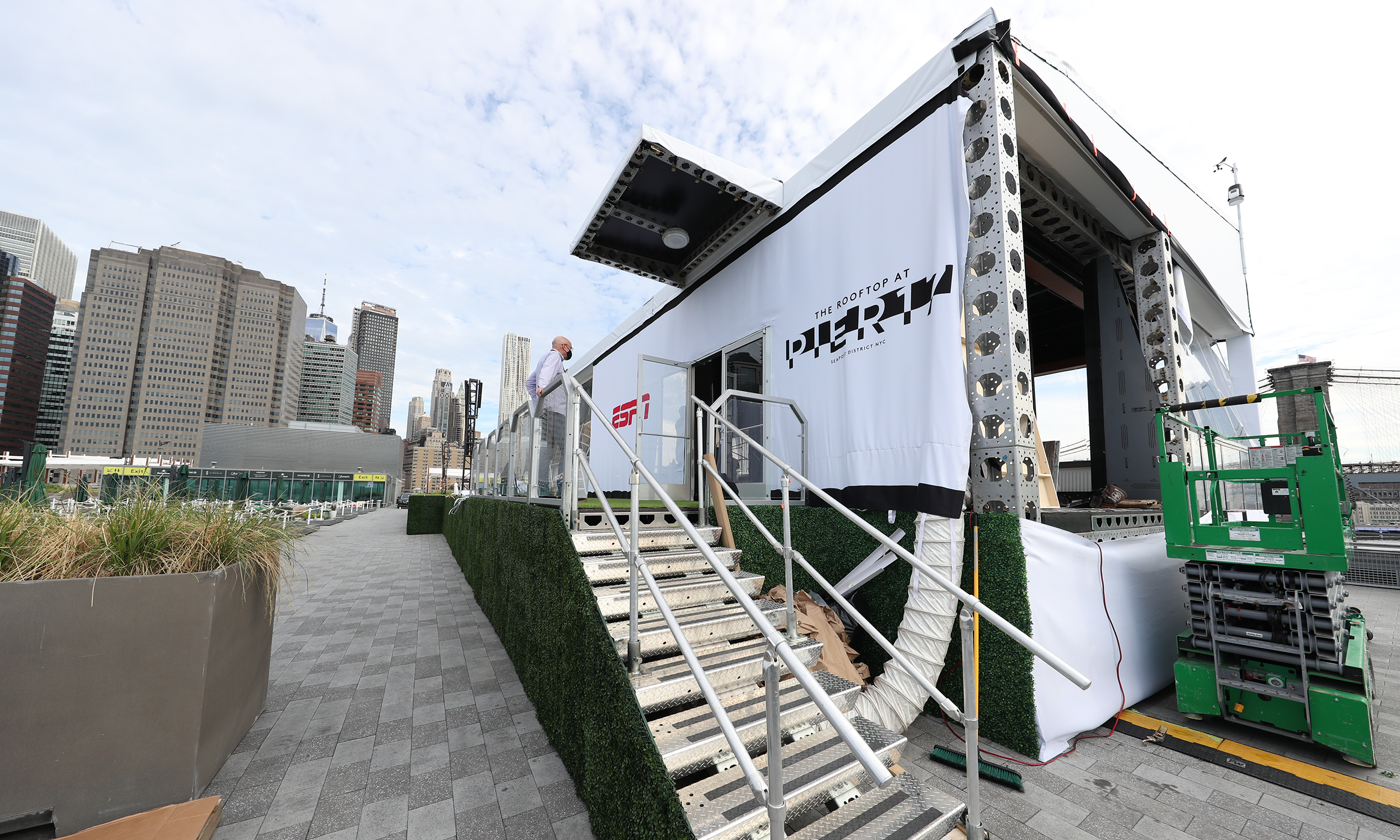
ESPN built a new studio for its NFL shoulder programming atop its Seaport District facility in New York City.
It’s a milestone year for one of sports television’s most iconic properties, as Monday Night Football is in its 50th-anniversary season. While ESPN honored the legacy of MNF, 2020 was undoubtedly the beginning of a new era for one of the longest-running series in TV with a new broadcast booth and new producer — Phil Dean — joining second-year director Jimmy Platt.
For its part, NFL Media and NFL Network looked to build on its offseason success with the NFL Draft, by simulcasting Thursday Night Football games with exclusive NFL Network broadcasts for weeks two, three, and four. With a full slate of daily studio programming emanating from its Culver City, CA, facility, NFL Media has stayed busy while also prepping for its move to SoFi Stadium in 2021.
CLICK HERE for Part 1 and CLICK HERE for Part 2 of SVG’s The Comeback series. The Comeback was originally published in the 2021 SVG Sports Production Yearbook, which you can read in full HERE.
